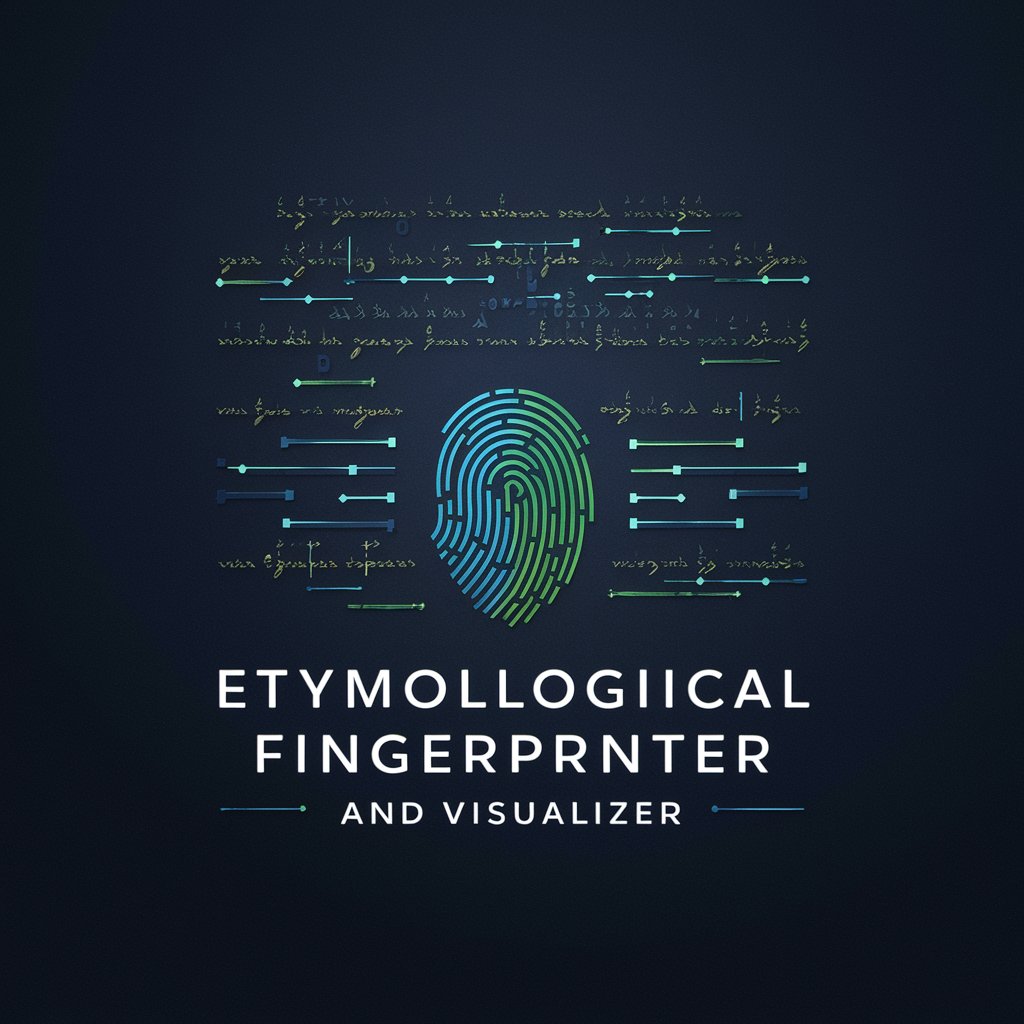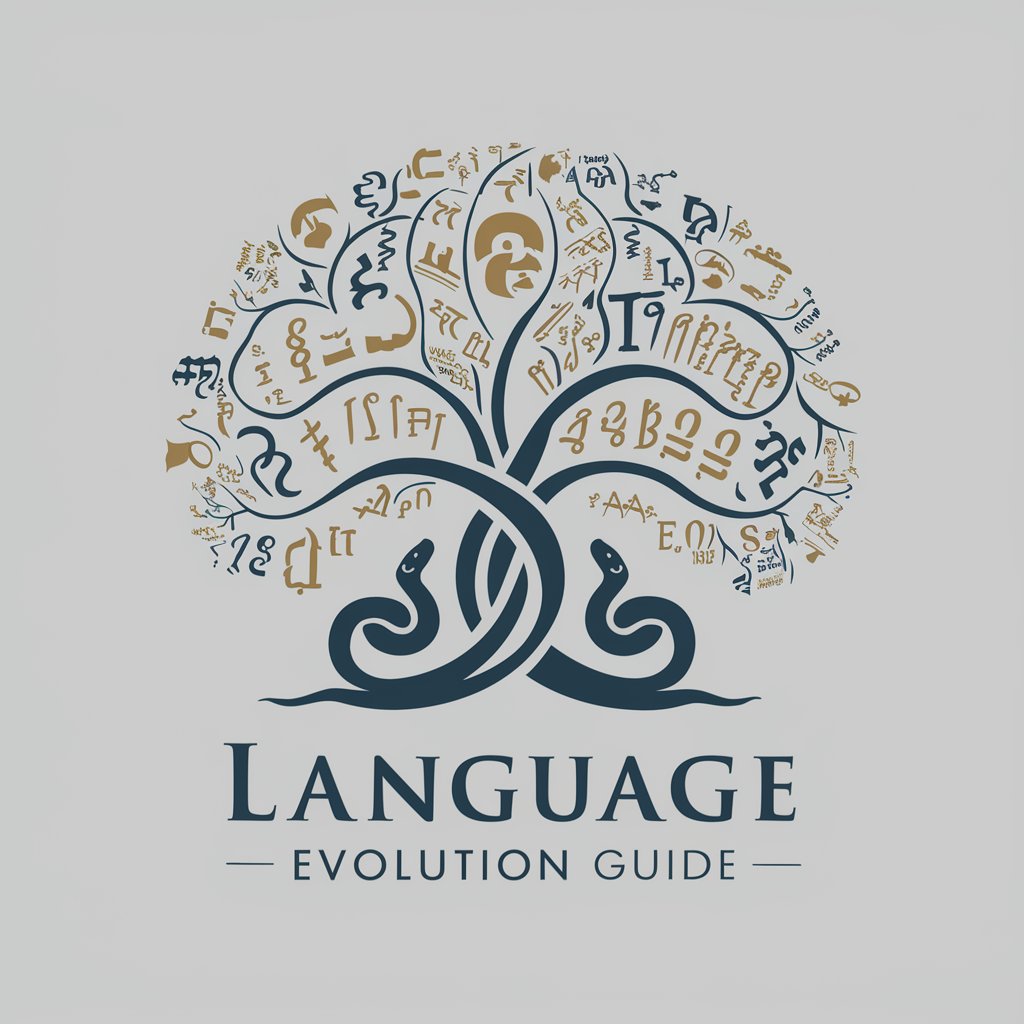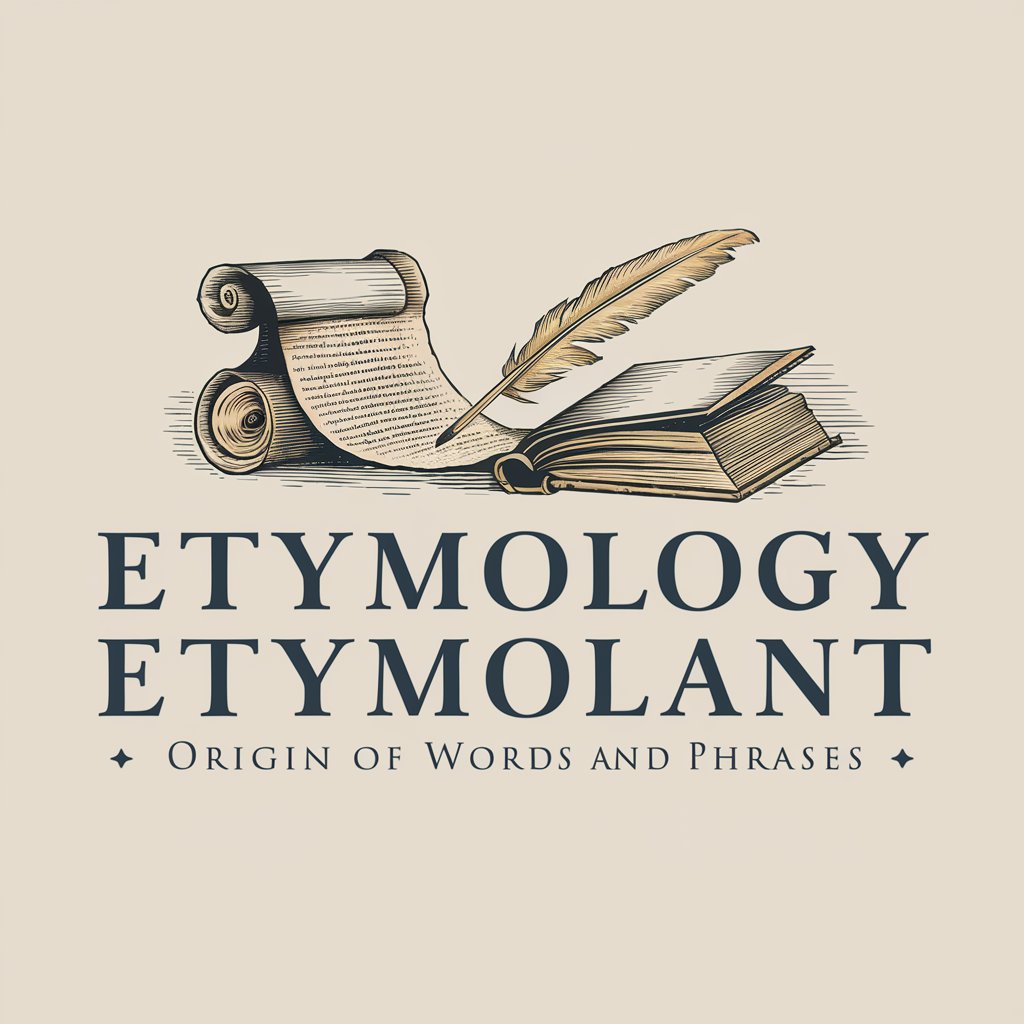Etymological Fingerprinter and Visualizer - Text Etymology Analysis

Welcome! Let's explore the origins of your text.
Unveiling the Roots of Words with AI
Analyze the etymological roots of this text:
Generate an etymology fingerprint for the following passage:
Create a CSV file showing the word origins for this excerpt:
Identify the frequency of each etymological root in this text:
Get Embed Code
Introduction to Etymological Fingerprinter and Visualizer
Etymological Fingerprinter and Visualizer is designed to analyze the etymological origins of words within any given text, providing insights into the linguistic diversity and historical influences that shape our language. By dissecting texts into their component words, identifying the etymological roots of each, and counting the frequency of these roots, it offers a unique 'fingerprint' of the text's linguistic heritage. This process involves cataloging each word's origin - whether Latin, Greek, Old English, French, or any other source - and presenting the aggregated data in a CSV format. For instance, analyzing a passage from Shakespeare might reveal a dominance of French and Latin origins, reflecting the rich linguistic tapestry of Elizabethan English. Conversely, a contemporary technical manual might show a higher frequency of Greek origins, particularly in terms related to science and technology. Powered by ChatGPT-4o。

Main Functions of Etymological Fingerprinter and Visualizer
Etymology Analysis
Example
Analyzing the etymology of 'democracy' traces back to Greek roots: 'demos' (people) and 'kratos' (power or rule), showcasing the tool's ability to illuminate the historical context and evolution of words.
Scenario
In educational settings, teachers use this function to enhance vocabulary lessons, demonstrating the historical and cultural journeys words have undergone to reach their current meanings and uses.
Frequency Count and CSV Formatting
Example
Given a political speech, the tool quantifies the prevalence of Latin-derived words versus Anglo-Saxon origins, providing a CSV output that visually represents this linguistic distribution.
Scenario
Researchers studying linguistic trends in political rhetoric utilize this function to quantify and compare the etymological diversity in speeches by different political figures over time.
Ideal Users of Etymological Fingerprinter and Visualizer
Educators and Students
Educators in linguistics, literature, and history can use the tool to demonstrate the evolution and origin of language, enriching their curriculum with insights into how words reflect cultural and historical changes. Students benefit by gaining a deeper understanding of the language, enhancing their vocabulary through the context of etymology.
Researchers and Academics
Academics researching linguistic patterns, historical linguistics, or the evolution of language find the tool invaluable for analyzing texts, identifying etymological trends, and corroborating theories regarding language development and influence.
Writers and Content Creators
Writers interested in the precision and nuance of language can use the tool to explore the etymological origins of their vocabulary, ensuring that their word choices align with the themes, periods, or settings of their work, thereby enriching their narratives with authentic linguistic textures.

How to Use Etymological Fingerprinter and Visualizer
Start Your Journey
Access our platform freely at yeschat.ai to explore Etymological Fingerprinter and Visualizer without any need for signing up or subscribing to premium services.
Prepare Your Text
Gather the text you wish to analyze. This could be an academic paper, a piece of creative writing, or any document where understanding the etymology could provide insights.
Input Your Text
Enter your text into the designated area of our tool. There's no limit on length, but larger texts may take longer to process.
Analyze and Visualize
Submit your text for analysis. The tool breaks down the etymological roots, counts the frequency of each origin, and presents a visual etymology fingerprint of your text.
Explore Results
Review the generated CSV output and visual representation. Use the insights to explore linguistic patterns, origins of words, and how they contribute to the overall narrative or argument of your text.
Try other advanced and practical GPTs
Bible Insight
Deciphering Scriptures with AI

AI Language HUB
Unraveling Language's Mysteries with AI

Sexy Sally
Your AI-Powered Flirty Friend

Sparkie The Μathematician
AI-powered math clarity and support

Celebrity Sparkle
Dress like a star with AI-powered style advice.

Sparkle
Revolutionizing Cleaning with AI

Language Evolution Guide
Exploring Language's Past with AI

Origin of Words and Phrases
Unlock the history of words and phrases with AI-powered etymology.

Historical Etymology Expert
Unlock the past, understand words deeply

JavaGPT
Elevate Your Code with AI

Critical Reader
Empower your reading with AI-driven insights.

Marketing Maven
Elevate Your Marketing with AI

FAQs About Etymological Fingerprinter and Visualizer
What exactly does Etymological Fingerprinter and Visualizer do?
It analyzes texts to identify and visualize the etymology of each word. By breaking down the linguistic roots and frequencies, it provides a unique 'fingerprint' of the text's etymological makeup.
Can it process texts in any language?
Currently, the tool is optimized for English texts. It relies on the rich etymological history of the English language to provide the most accurate and detailed analysis.
How long does the analysis take?
Processing time depends on the length and complexity of the text. Most texts are analyzed within a few seconds, but very long documents may take longer to process.
Is there a word limit for texts submitted for analysis?
There is no strict word limit, but texts longer than 10,000 words might require additional processing time. The tool is designed to handle extensive documents efficiently.
How can I use the results of the analysis?
The results can be used for academic research, enhancing writing by understanding the origins of words, or simply for personal interest in linguistics. The CSV output enables further statistical analysis or visualization in other software.
